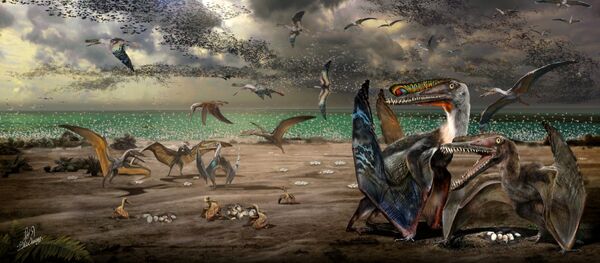A previously unknown species of giant pterosaur, more commonly known as pterodactyl, has been unearthed by scientists in Utah.
Identified through remains found in the northeastern part of the state, the newly discovered member of the family had a massive wingspan of about 1.5 [3.2 feet] and sported a total of 112 teeth, including four inch-long fang-like chompers sticking out near the snout.
A jutting lower jaw suggests a pelican-like pouch, perhaps to scoop up fish and small reptiles, media reported.
Although the bones are still encased in sandstone, scientists have generated accurate 3-D images and models of each fossil using CAT scan technology.
The location where the fossilized remains were found is part of what used to be an oasis in a two-million square kilometer desert covered with giant sand dunes.
“During droughts, large numbers of animals — including pterosaurs, predatory dinosaurs and crocodylomorphs — were drawn to the pond in the middle of the oasis, where they died as water dried up,” Brooks Britt, a palaeontologist at Brigham Young University in Utah, said.
Overall, more than 18,000 bones from dozens of water-starved animals have been discovered.
The fact that the high-flying creatures were spread across much of the globe may have helped them survive the end-of-Triassic mass extinction, which wiped out half of the species on land and in the sea.
READ MORE: Paleontologists Discover New Species of 10-Ton, 40-Foot Dinosaur in Russia


